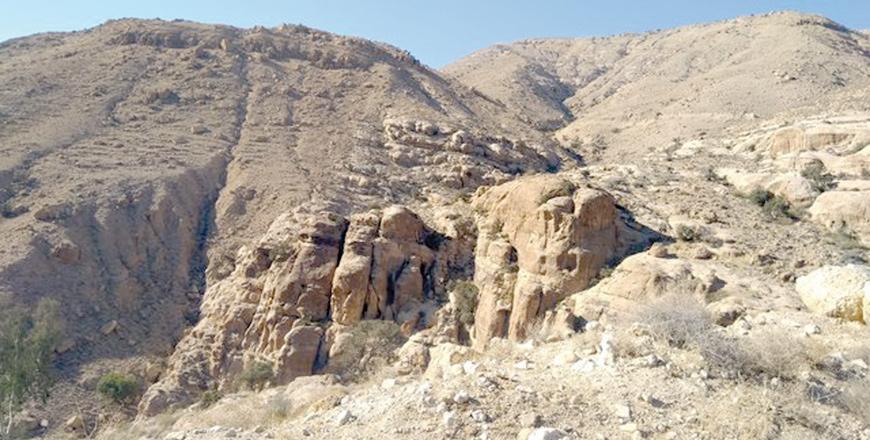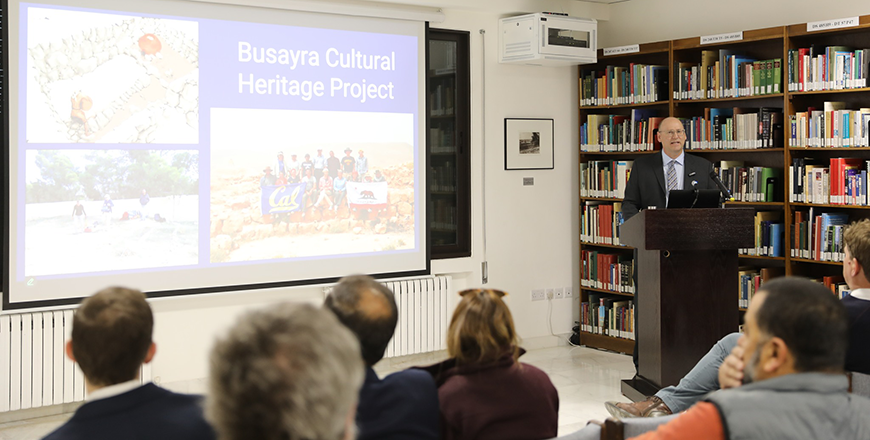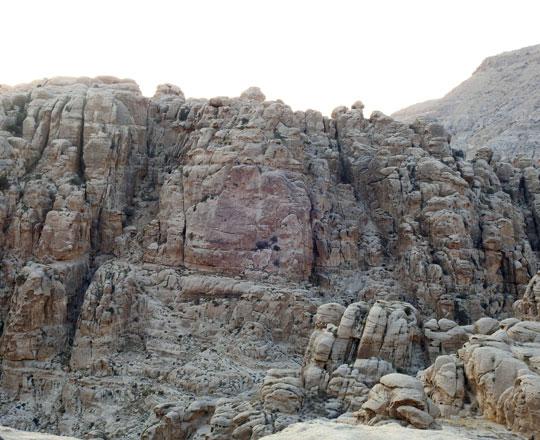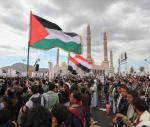You are here
Conference offers archaeological perspective on ‘multifaceted’ Edom
By Saeb Rawashdeh - Jun 19,2021 - Last updated at Jun 19,2021

Busayra once the administrative and political capital of the Kingdom of Edom (Photo courtesy of ACOR)
AMMAN — A conference titled “Multifaceted Edom: Recent Research on Southern Transjordan in the Iron Age from an Archaeological and Cultural-Historical Perspective” organised by the German Protestant Institute of Archaeology in Amman between June 8 and June 10 gathered local and international scholars.
Previously planned for 2020, the event was re-scheduled to June this year due to COVID-19 pandemic, the organisers said.
“Located at the southwestern border of the Assyrian Empire in an arid region, agriculturally marginal and apparently without economic advantages, Edom [which stretched southwest from the Dead Sea] experienced from the late 8th to the 7th century BC a period of relative prosperity and increased settlement,” noted Rassel Adams from University of Waterloo, Canada.
He said that during the same period Assyrian Empire penetrated westward controlling the whole Levant.
In less than 200 years most political entities in the region lost their independence and more than 20 provinces were established, Adams said, adding that the Assyrian Empire stimulated a development in the social and political organisation of Edom.
Talking about Edomite mountain strongholds, which were occupied for the first time in the Late Iron Age, Roca Da Riva from the University of Barcelona said that these sites were located at the altitudes of 1,200-1,600 metres above the sea level and difficult to access.
“The main characteristic of these sites is the degree of protection they provided by virtue of their location, but they share other features as well, such as the presence of elements related to water management, storage buildings known as ‘longhouses’ and a specific kind of pottery. In addition, most of them seem to be associated to other Iron Age permanent settlements located nearby, which are much easier to access,” Da Riva explained.
The history and function of the “mountain strongholds” have not yet been conclusively determined; it is not clear who occupied them, for what reason and for how long, Da Riva added.
For Andrew Danielson from the University of California in Los Angeles the political and economic activity in the Late Iron Age was followed with qualitative changes in settlement patterns.
His presentation assembles recent research, and through new analyses of settlement organisation and material culture, identified particular modes by which authority was organised and distributed throughout Edom.
“The importance of trade activity in relation to political economy and Edom’s influence trans-regionally, and the role of shared behaviour and ideology as a centralising form of social cohesion characterised Edom in the Late Iron Age,” Danielson said.
Related Articles
AMMAN — Busayra, located 20 km south of Tafileh, was the ancient capital of the Edomite Kingdom.
AMMAN — An inscription in Sela, south of Jordan, has gripped the attention of scholars, according to a Spanish historian.Hanging from a clif
AMMAN — Archaeology has become more interdisciplinary science so scholars specialised in environmental sciences became involved in research


















